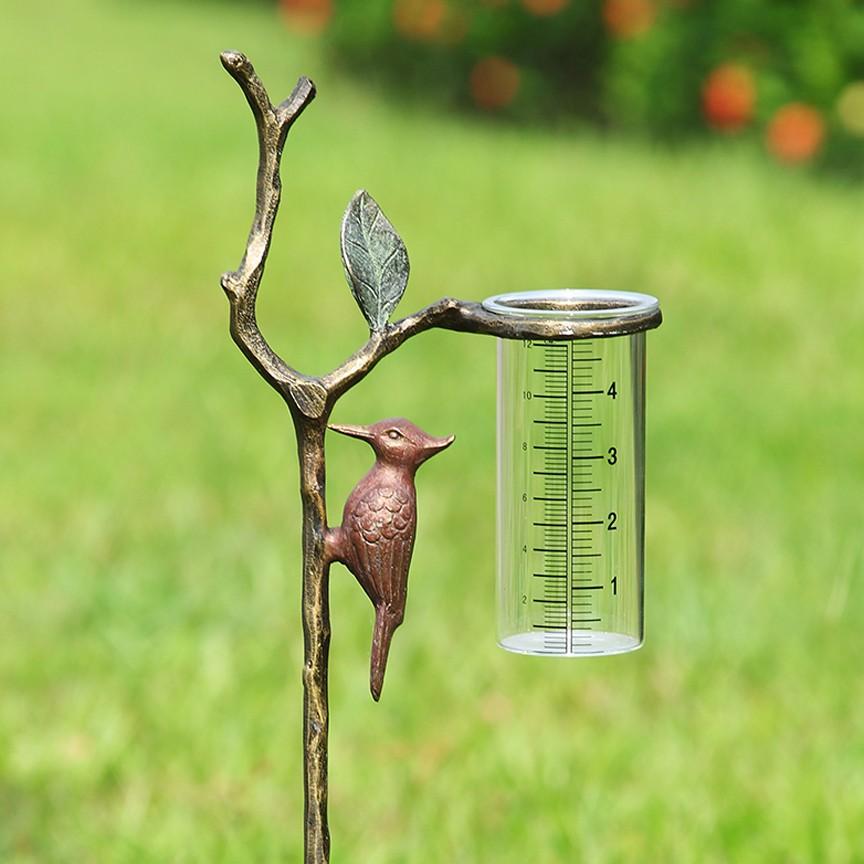Discover the very best Rain Gauge for Accurate Weather Measurement and Forecasting
Discover the very best Rain Gauge for Accurate Weather Measurement and Forecasting
Blog Article
Introducing the Scientific Research Behind Rain Assesses: Just How These Devices Play a Critical Function in Environment Research and Environmental Surveillance
Rain determines, seemingly basic tools, hold a profound value in the realm of environment study and environmental tracking. These plain tools quietly collect among nature's most essential components-- rains. Behind their unpretentious exterior lies a complicated scientific research that is crucial for understanding the dynamics of our atmosphere. As we peel back the layers of this scientific veil surrounding rain gauges, we uncover a world where precision, data accuracy, and careful monitoring assemble to introduce a much deeper understanding of our transforming climate and its influence on the earth.
Importance of Rainfall Scales
Rainfall evaluates play a vital function in tracking and measuring rainfall degrees, offering vital data for environment study and analysis. These devices are basic in measuring the quantity of rains that takes place in a certain area over a certain period. By accumulating and gauging rain, rain evaluates offer valuable understandings into the circulation and strength of precipitation, aiding meteorologists, hydrologists, and climatologists in recognizing weather condition patterns and trends.
Additionally, long-term data gathered from rainfall assesses aids in analyzing climate adjustment influences and patterns, contributing significantly to scientific research study and decision-making procedures. In significance, rain gauges serve as important devices in the area of weather forecasting and environmental science, playing a vital function in progressing our understanding of weather condition and environment characteristics.
Kinds Of Rainfall Gauges

Performance and Operation
In the realm of climate research and atmospheric researches, the performance of rainfall assesses depend on their elaborate functionality and exact functional mechanisms. Rainfall determines are made to properly determine the amount of precipitation that drops over a details location throughout a set period. These tools commonly include a channel that gathers rainwater and networks it into a measuring tube. The gauging tube is noted with calibrated dimensions that see enable the accurate metrology of rains.
The capability of rainfall determines is based on the concept of gauging and collecting rain in a standardized way. This gathered information is essential for understanding regional climate patterns, tracking long-term environment patterns, and assessing environmental influences. To guarantee precise dimensions, rain determines need to be tactically positioned in open areas away from blockages such as buildings or trees that could hinder the collection process.
The functional element of rain determines includes regular upkeep to stop particles buildup, calibration checks to maintain dimension accuracy, and data taping for evaluation (rain gauge). Overall, the performance and procedure of rain evaluates are crucial for gathering trustworthy rainfall information vital to climate research and environmental tracking
Function in Environment Research Study
Given the vital value of exact rainfall dimensions in understanding weather patterns and environmental impacts, the role of rain assesses in environment research study is vital. reference Rainfall assesses supply crucial information for environment research study by measuring the amount of precipitation read the article that tips over a certain area during a given duration. This information is vital for monitoring lasting fads in rainfall patterns, evaluating the impact of climate change on rains circulation, and improving climate models.

Climate scientists use data accumulated from rainfall gauges to assess variations in rainfall levels, recognize regional environment trends, and evaluate the efficiency of water source monitoring methods. By comparing historical rainfall data with existing measurements, researchers can discover changes in precipitation patterns, such as adjustments in the frequency or strength of rainfall occasions. This information is crucial for understanding exactly how climate adjustment is affecting rainfall dynamics and can assist policymakers make informed decisions regarding adaptation and reduction strategies.
Applications in Environmental Surveillance

In flooding forecasting, rainfall scale information assists to track rainfall strength and circulation, enabling authorities to provide timely cautions and take essential procedures to alleviate flooding risks (rain gauge). Drought surveillance counts on rain scale data to examine dampness levels in the dirt and track precipitation deficits, aiding in the recognition of drought-prone areas and the implementation of dry spell response strategies
Moreover, rainfall gauge data plays an essential duty in water resource management by giving info on water availability and use patterns. This information is utilized to make informed choices regarding water allocation, preservation measures, and lasting water resource preparation. Additionally, in farming, rain scale data aids farmers in enhancing watering schedules, plant choice, and total farm monitoring methods based upon local rainfall patterns. In general, rainfall evaluates are indispensable devices in ecological tracking, offering useful insights that add to educated decision-making and sustainable source management.
Final Thought
To conclude, rainfall evaluates are important tools for determining rainfall, supplying useful information for environment research study and environmental surveillance. With different kinds and functionalities, rainfall assesses play a critical duty in comprehending precipitation patterns and their impact on the environment. By accurately measuring rainfall, these tools add to the advancement of scientific expertise and aid in making educated decisions pertaining to water resource administration and disaster preparedness.
Rainfall assesses play an indispensable duty in surveillance and gauging rainfall levels, giving essential information for climate research and analysis. The typical rainfall gauge, known as the "tipping pail" gauge, is one of the most generally made use of gadgets. Ultrasonic rain determines usage sound waves to identify the visibility of rainfall, providing real-time information on precipitation degrees.Climate scientists make use of data collected from rainfall gauges to assess variations in rainfall levels, determine regional environment patterns, and evaluate the performance of water resource monitoring strategies.In final thought, rain assesses are important devices for determining precipitation, giving important information for climate research study and environmental tracking.
Report this page